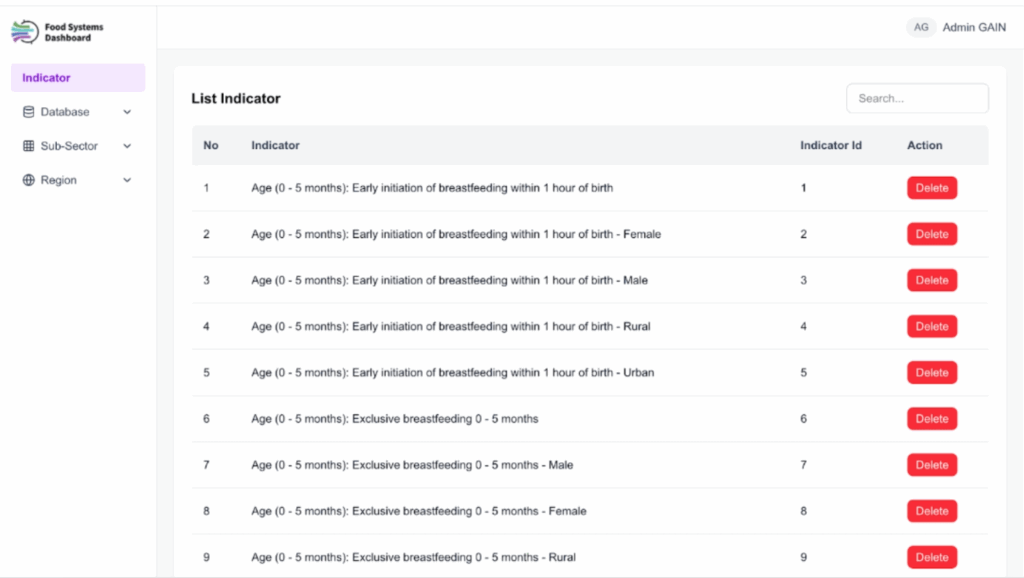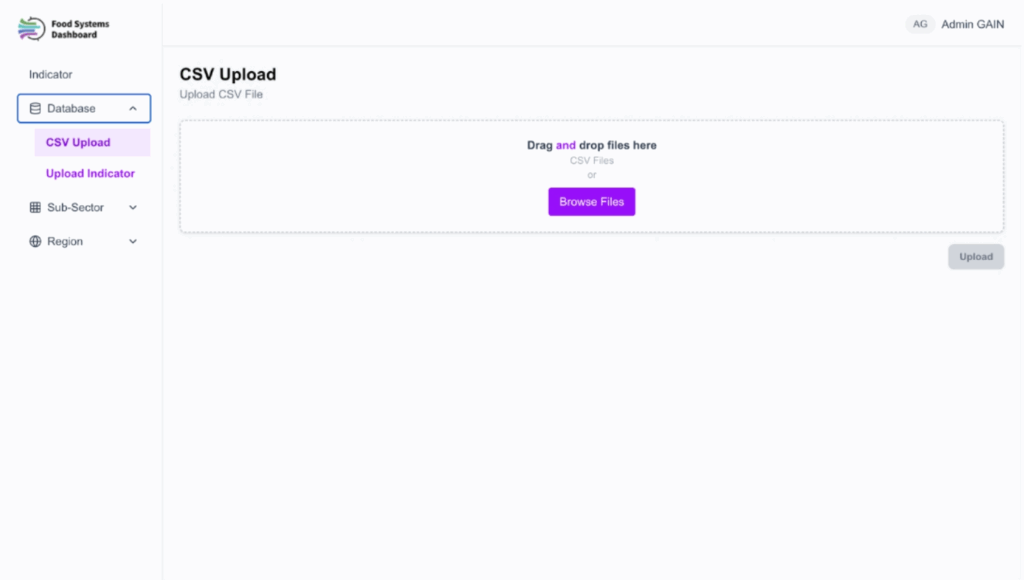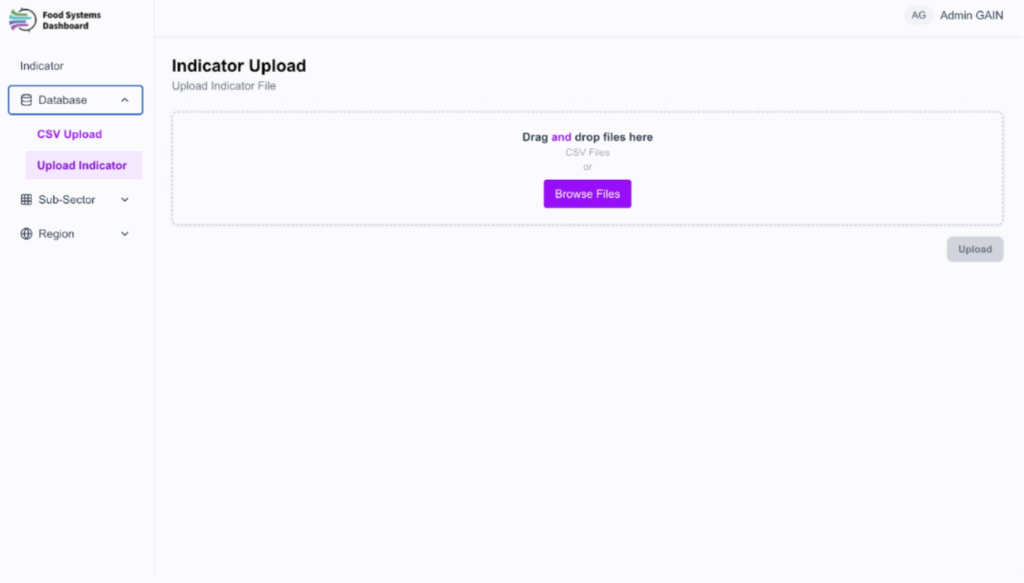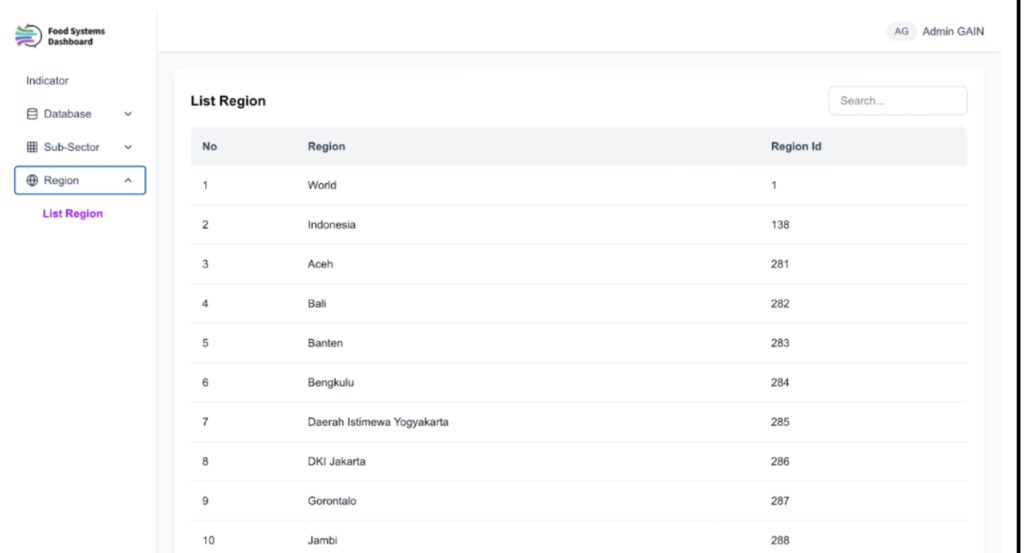Food security is a major global challenge, especially where reliable data is limited. To effectively address these challenges, policymakers and stakeholders need access to accurate, accessible, and actionable data.
Recognizing this need, ArnaTech partnered with the Global Alliance for Improved Nutrition (GAIN) to develop the Indonesian Food System Dashboard—a web-based platform designed to centralize complex food system information and make it more usable for decision-making. This platform transforms scattered datasets into insights that drive better food and nutrition strategies.
Challenges in Tracking Food Security Indicators
Before the dashboard was introduced, food system data in Indonesia was scattered across multiple sources and often difficult to analyze. This made it challenging for stakeholders to access a centralized view of key indicators, understand complex datasets, and use them for evidence-based decision-making. GAIN needed a solution that would consolidate data, visualize trends in a user-friendly way, and provide a scalable infrastructure that could grow with future needs.
Arnatech`s Solutions
ArnaTech responded by developing a comprehensive, web-based dashboard that integrates multiple data sources into a single, intuitive interface. The platform was designed with flexibility, usability, and future growth in mind. Key features include:
Region Profiles – providing localized data views
Detailed profiles for each region in Indonesia, allowing users to view food system and nutrition data at a local level. This feature ensures that policymakers and researchers can analyze conditions specific to provinces or districts, rather than relying only on national averages.
FSCI Indicators – tracking progress through the Food Systems Countdown Initiative
The platform integrates indicators from the Food Systems Countdown Initiative (FSCI), a global effort to track progress on food system transformation. By embedding these indicators, the dashboard aligns Indonesia’s monitoring efforts with international standards, making it easier to evaluate progress, identify gaps, and benchmark against global goals.
CSV/Excel Upload – simplifying data integration
This feature reduces technical barriers for data entry and ensures that new information can be integrated quickly. It empowers organizations to continuously enrich the dashboard with fresh data without requiring advanced technical skills.
Data Management & Monitoring – ensuring accuracy and long-term usability
Administrators can track updates, validate entries, and maintain consistency across different datasets. This ensures the platform remains reliable, sustainable, and useful for long-term monitoring and decision-making
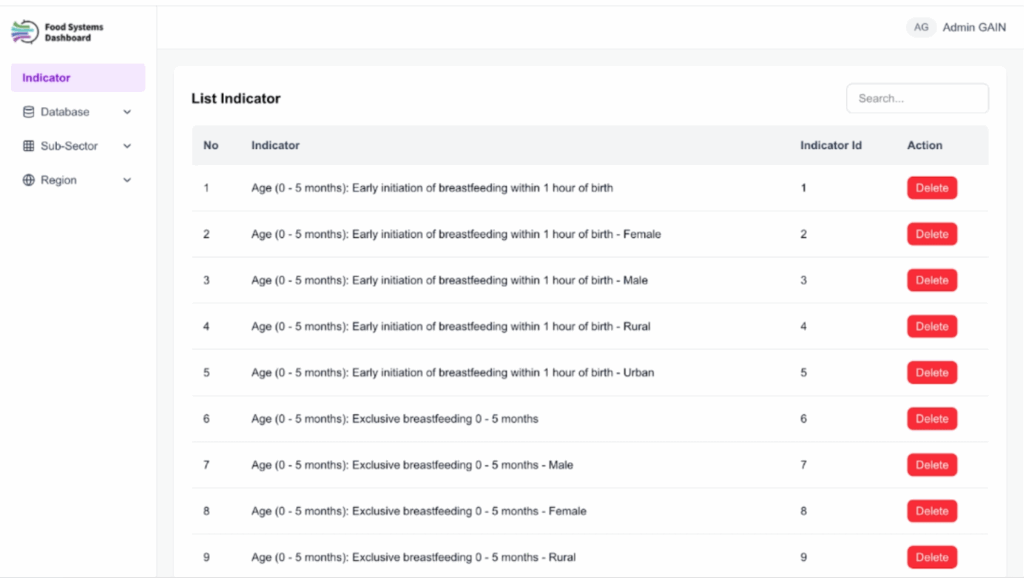
Outcomes
The Indonesian Food System Dashboard has created measurable impact by giving GAIN and its partners a reliable tool to manage and analyze food system data. With this platform, they can now:
- Monitor nutrition and food security indicators in real time, allowing faster identification of challenges and opportunities.
- Support evidence-based policymaking, ensuring that strategies for food and nutrition are informed by accurate, up-to-date data.
- Strengthen collaboration between stakeholders, including government agencies, NGOs, and researchers, by providing a common platform for data access and interpretation.
This project shows how digital technology can turn raw information into meaningful knowledge that directly influences national food security strategies.
Conclusion
At ArnaTech, we believe that technology should go beyond efficiency—it should create tangible, positive impact. The Indonesian Food System Dashboard is a powerful example of how digital innovation can bridge the gap between data and decision-making.
By building this platform, we enabled GAIN to translate complex datasets into actionable insights, directly supporting their mission to improve nutrition and strengthen food systems in Indonesia. This project reflects our commitment to using technology as a catalyst for sustainable development and societal progress.
